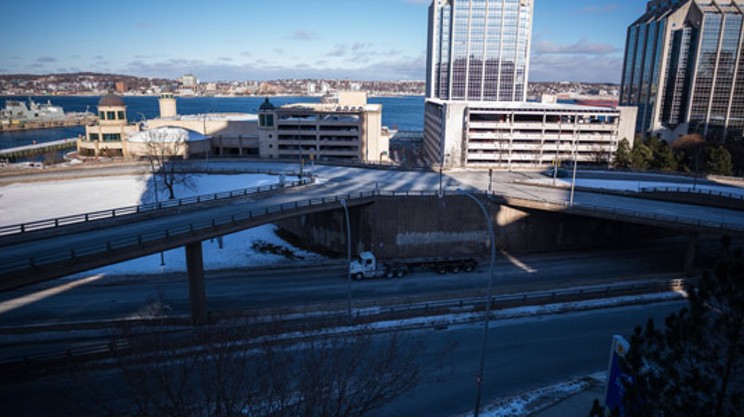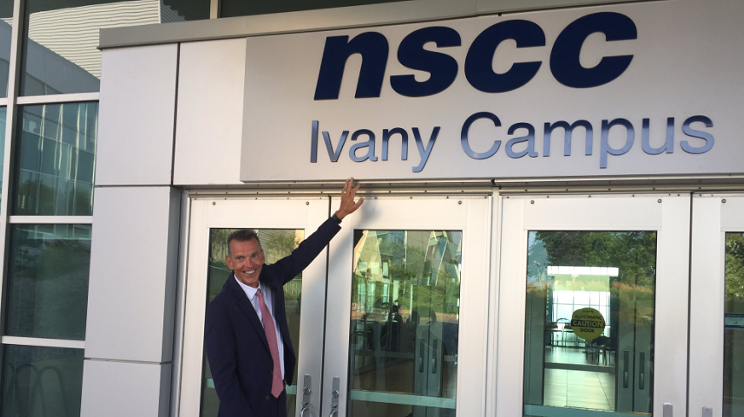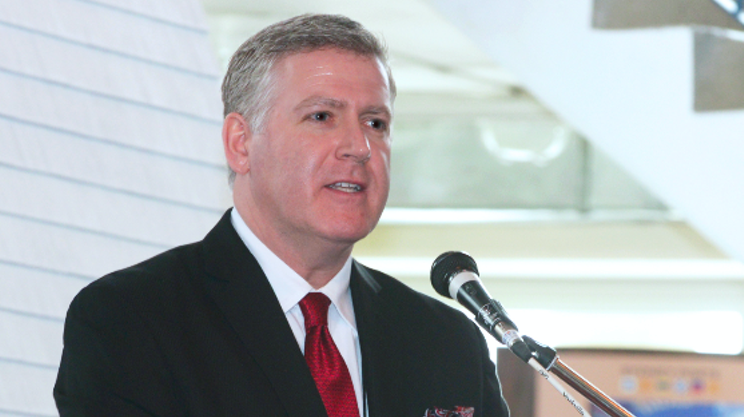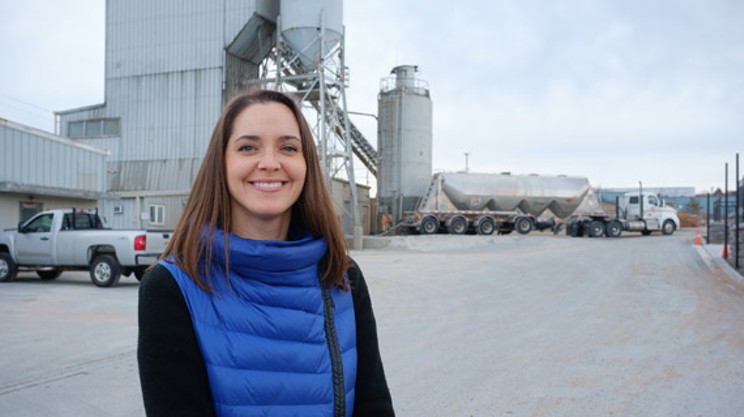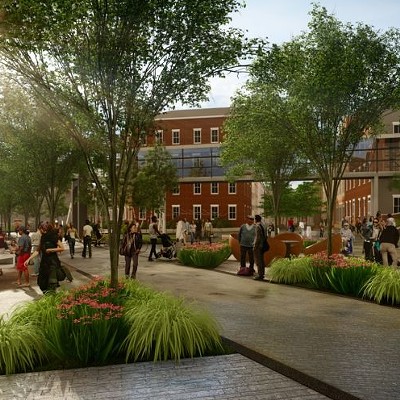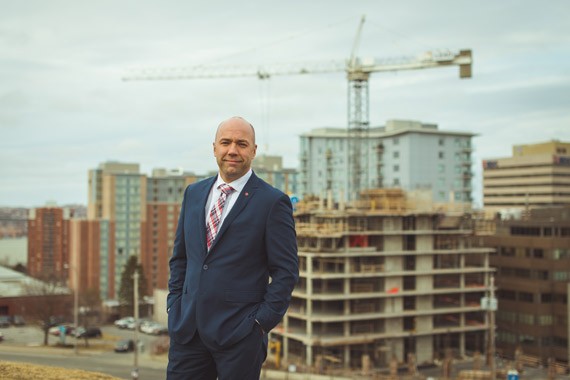
How much the government spends isn't nearly as important as what it spend that money on, says Andy Fillmore.
The federal budget announced this week includes $5 billion over the next five years towards environmental improvements in municipal infrastructure. In the wake of that commitment, the Liberal MP for Halifax is bringing forward his first private member's bill to prioritize infrastructure funding based on sustainability.
Fillmore's bill asks the Canadian government to analyze the potential greenhouse gas emissions of any federally funded infrastructure projects over $500,000 and prioritize those that help reduce climate change impact.
The former manager of urban design with HRM hopes it will encourage better environmental investment in Canadian cities by getting local governments thinking about sustainability impacts before approving projects.
"We took some heat in the campaign for not coming out with a [greenhouse gas reduction] target right away," says Fillmore. "You can announce a target, but without a plan, without your partners to get there, put any target you want out there—no one's going to achieve it."
Mark Butler, policy director for the Ecology Action Centre, is optimistic about Fillmore's proposal, despite being leery that any government requirements could lead to more paperwork than progress.
"I think it's definitely worth raising, and if it's applied appropriately I think it'll help to ensure we don't fund the stuff that's contrary to our climate change targets," Butler says. "The intent is a good one, the message is a right one and generally the government should always fund stuff that's consistent with its overall program."
The federal government plans to spend an extra $60 billion on infrastructure over the next decade—nearly double what was being spent by the former Harper government—but the majority of that money won't arrive until after the next election.
The Liberals have committed nearly $12 billion in the next five years to infrastructure spending on water and wastewater systems, public transit and social projects like affordable housing. Whatever portion of those funds end up in HRM will be sorely needed. Twenty percent of Halifax's households currently need low-income housing in a municipality where only four percent of housing qualifies as non-market. Halifax's water and sewage system also needs millions of dollars to improve capacity and reverse an "incredible deficit" of deferred maintenance, says Fillmore.
"We're at risk of handing our kids cities that are ready to collapse."
Municipalities will also receive $518 million from the federal government over the next five years to be spent on climate change mitigation. A second phase of infrastructure funding geared towards transforming Canada into a low-carbon economy will arrive after 2020.
All of that spending contributes to a nearly $30 billion deficit that's drawn criticism from opposition and some in the business community. But Fillmore isn't too worried about how the private sector will react to his private member's bill.
"There may be some furrowed brows at the beginning of this," Fillmore says, "but for the most part the people applying for this infrastructure money are municipalities, and municipalities have a responsibility to lead on the climate file."
Andy Fillmore on...
Construction impacting small businesses
“This city is learning a lot right now about being a growth city. I don't think anyone living really, of working age, remembers us being a growth city. So this is all new. Remember, there was a whole generation of working Haligonians that never saw a crane on the sky...We’re just learning how to crawl here out of our two or three decades of stagnation. Some unfortunate moments in that learning, and I hope that the development industry and the municipality are always learning how to do it better next time.”
Downtown office vacancies
“We allowed way too much office space to be built in the business parks...I’m afraid our city still has some catching up to do with that...certainly one thing you can do is stop approving them. That's a good starting point.”
The Cogswell Interchange redevelopment
“This has the potential to lead North America, maybe even the world in an incredible, green, urban precinct that could be entirely off the grid...There are a lot of Canadian cities that experienced wonderful urban growth from the late 80s, a 20-year period ending in 2005, basically. Halifax basically sat that period of urban densification out, because of our problematic development policies and the tension between heritage and growth. That's why we have so much sprawl...We couldn't go de-sprawling Cogswell until we revived the patient down here.”
The Nova Centre
“I'm hugely pleased with the way the design changed two years ago, as a result of the public process to get that ballroom out of the bedrock and into the sky. Just in the last couple of weeks, one of the parts I was most worried about, the space on Grafton Street—the proportions of that corridor are vast. So I don't think we have to worry about that being a tunnel or feeling unpleasant in there...I wish that more care had been taken on construction impact mitigation..Broadly speaking, when this is all behind us and that building is built, for sure what we're seeing is there's still a market for large conventions in the world...Once the wounds heal, I think we’ll be better off.”
Densification
“That old dream of the one-acre lot, the picket fence, the one or two cars in the garage and a lawn to mow, that's a shrinking dream. That's a dream of fewer and fewer people. The reason is millennials are entering the workforce. Their sense of success is very different than their parents was...Immigration's absolutely critical to keep this trend going, and every time I see a crane downtown my heart lifts because I know the units being built there are not one-acre units that are being built in a forest or a farm that have to be serviced by infrastructure and has to be maintained at a cost that the taxes we raise from those areas will never pay for it."
The Ivany Report
“There are people that are working hard to fulfill it in earnest, and there are people who are trying to use it to leverage a different perspective which isn’t really that helpful.”
Nova Scotia's Liberal government
“I don’t envy the decisions the provincial government have had to make. They have an almost untenable financial situation to contend with...I see this provincial government working hard to try and fulfill the promises of the One Nova Scotia report. It's just a very difficult place to be right now, in provincial government.”


